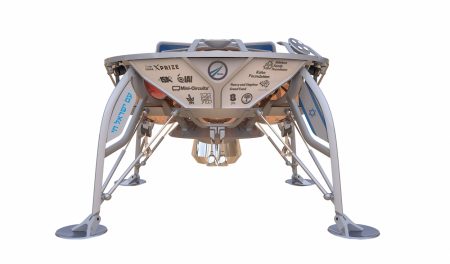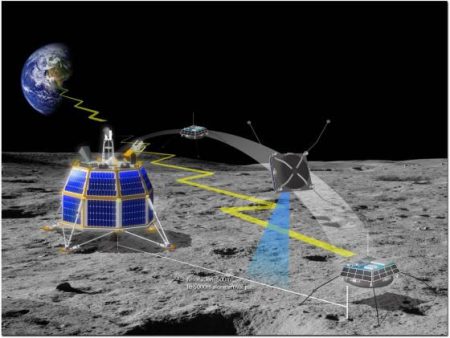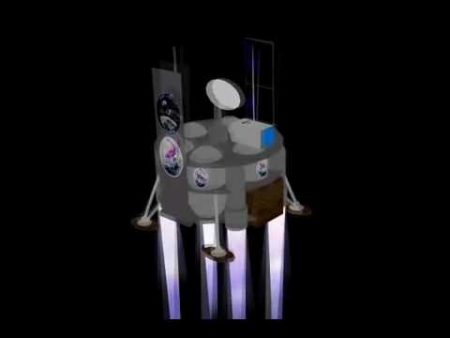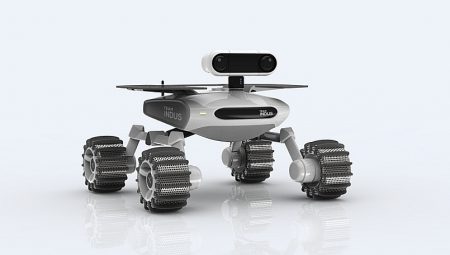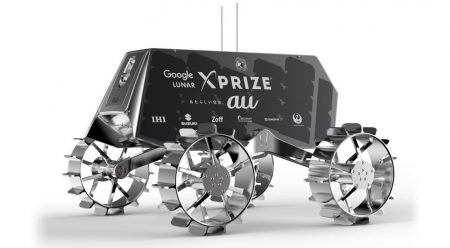November 20, 2017 – When Google agreed to sponsor and put up the prize money for an XPrize contest back in 2010, the goal was to challenge entrepreneurs to create low-cost methods to do exploration in space. The target chosen was the Moon. Anyone signing up to the contest was given three objectives:
- land on the Moon’s surface
- travel a minimum of 500 meters (1,640 feet) across the surface
- transmit high-definition images and video back to Earth
The grand prize offered was $20 million US. Second place would receive $5 million, and an additional $5 million would be offered in bonus prizes. The latter included $1.75 million for the contest entrant to complete one orbit around the Moon or do a direct descent to the surface, and $3 million to demonstrate a soft landing.
Initially, 25 teams accepted the challenge. The deadline date to achieve the contest goals slipped from December 31st, 2015, to March 31st next year. So we are now a mere 4.5 months from the end date with two finalists looking pretty good, two maybes, and one also-ran.
So who are these entrepreneurs and inventors? And how and when will they be going to the Moon?
The also-ran is SpaceIL, an Israeli not-for-profit that was the first to sign a launch contract back in 2015 with SpaceX, but has been challenged by the design of its lunar lander and the ability to fit it into the payload constraints required for the Falcon 9 launch vehicle. If SpaceIL does solve the remaining challenges it may still get into the race with a launch before the deadline but that requires SpaceX to reserve payload space on an upcoming mission. Time is running out even with SpaceX ambitious launch schedule of five flights including the first test of the Falcon Heavy between now and the March 31st deadline. SpaceIL’s approach to meeting the three objectives was different from other entries. Instead of a combination lander and rover, the spacecraft would land and then take off again to land 500 meters away from the original touchdown point. What may save this team is a further extension of the deadline.
One of the two maybes is Moon Express an American entry with a launch contract that may prove its undoing. The rocket they have chosen is the New Zealand-founded Electron, a product of Rocket Lab. The company flew its first mission back in May of this year. Supposed to be an orbital test mission, it didn’t quite make it. Its next launch is planned in the very near future but doesn’t include Moon Express. The payload is likely going to be two CubeSats.
Moon Express has achieved two of the Milestone prizes offered to contestants during the development phase of the contest. The first, a Landing Prize worth $1 million, and the second, an Imaging Prize worth $250,000. But getting to the Moon with an unproven launch system may be impossible within the deadline. So this team, like SpaceIL may need an extension or it, too, will drop out.
But even if Moon Express doesn’t succeed with the XPrize, they intend to develop lunar exploration and mining with a sample return mission planned for as early as 2020.
The next maybe is Synergy Moon, an international entry with 10 different contributors from 15 different countries involved in the project. Recently they signed a launch contract with Interorbital Systems, a California-based developer of the Neptune N-8 rocket. This is a launcher designed to put small payloads into Earth orbit, but clearly, for the lunar mission, it will need to escape Earth’s gravity which could be done with elaborate orbital maneuvers. The payload will include both a lander and rover. From the web site information, it is hard to see what the final design looks like. The picture below is more conjecture than accurate. And as for a launch date, nothing appears to have been announced. So that’s why it is a maybe.
I place my bets on the final two described below.
The first is TeamIndus. This Indian-based competitor is also a $1 million winner of one of the Milestone prizes within the competition. The launch vehicle is the PSLV, one of the Indian Space Agency, ISRA’s two rockets capable of putting satellites in orbit. The PSLV is used for polar-orbital insertion missions in Earth orbit.
So how will TeamIndus get to the Moon? The plan is to launch the spacecraft into an elongated Earth orbit with an apogee of 70,000 kilometers above the planet, and then do a series of orbital maneuvers to get it into position where it can decelerate and soft land on Mare Imbrium, on the lunar surface. The mission duration will last 24 days, 10 days outbound, and 14 days on the Moon’s surface. Earliest launch date is December 28, 2017.
Team Hakuto is also a good bet. This Japanese team has won a $500,000 Milestone prize demonstrating mobility in the run-up to the finals. The product of ispace inc., a Tokyo company interested in lunar mining, Hakuto appears to be the most sophisticated of all entries in the competition, built of carbon-fiber-reinforced plastic, and capable of withstanding the extreme heat and cold of the lunar environment. It is powered by side-mounted solar arrays, has four stereo cameras covering a 360-degree view, and can be operated remotely from Earth. On-board hazard cameras and infrared detectors see dangerous hazards ahead and can avoid them. Hakuto plans to use a PSLV, ISRA’s launch vehicle to escape Earth. It may even turn out to be a payload partner of TeamIndus’ entry. So December 28th could be the mission start date if all goes well.
With these latter two appearing ready to go, I see no reason for the XPrize to extend its deadline, which means that by March we may have two multi-million dollar winners claiming victory and runner-up in this most ambitious venture.
What will this prove? That space exploration doesn’t necessarily require multibillion-dollar budgets to succeed.
When offered a tantalizing carrot it seems that we humans can apply our ingenuity and creativity in ways that surprise all of us. In the end, if successful the Lunar XPrize will be an important step in demonetizing the exploration and exploitation of space. If you are not familiar with the term “demonetizing,” is a favourite of Peter Diamandis who uses it when describing the disruptive impact of technological progress in the 21st century.


